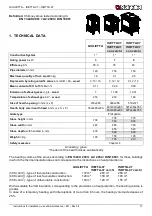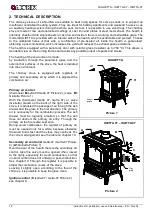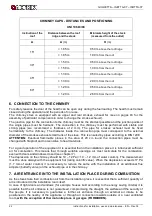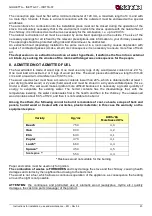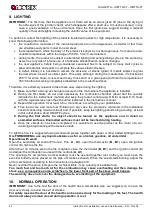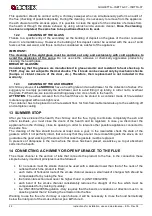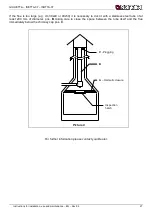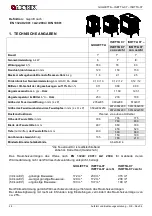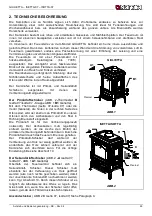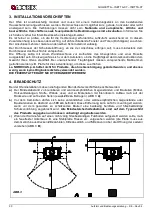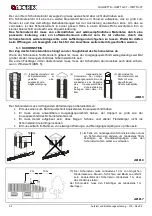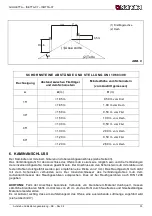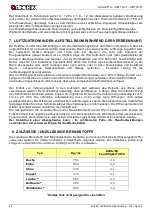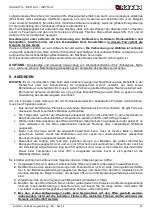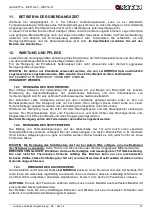
GIULIETTA – ISETTA-07 – ISOTTA-07
Instructions for installation, use and maintenance – EN – Rev.04
23
The connection pipe must be flat with a minimum diameter of 120 mm, a maximum length of 4 m and with
no more than 3 bends. If there is a direct connection with the outside it must be endowed with a special
windbreak.
The air entrance for combustion into the installation place must not be closed during the operation of the
stove. It is absolutely necessary that in the environment in which the stoves operate with the natural flue of
the chimney, it is introduced as much air as necessary for the combustion, i.e. up to 20 m
3
/h.
The natural recirculation of air must be ensured by some fixed openings on the outside. The size of the
necessary openings for air is fixed by the relevant prescriptions. Ask information to your chimney sweeper.
The openings should be protected with grids and should never be obstructed.
An extraction hood (aspirating) installed in the same room or in a room nearby, causes depression with
output of combusted gasses (smoke, smell). As consequence it is necessary to ensure more flow of fresh
air.
The depression in an extraction hood can at worst hypothesis, transforms the flue into an external
air intake, by sucking the smokes of the rooms with dangerous consequences for the people.
8. ADMITTED/NOT ADMITTED FUEL
The fuel admitted is made of wood logs. One must use only logs of dry wood (water content max. 20 %).
One must load at maximum 2 or 3 logs of wood per time. The wood pieces should have a length of 30-40
cm’s and a maximum circumference of 30-35 cm’s.
The wood used as fuel must have a moisture contents lower than 20%, which is obtained after at least 1
year drying (tender wood) or 2 years (hard wood) and must be stored in a dry and ventilated place (for ex.
Under a shed). The wet wood makes ignition more difficult because it is necessary a greater quantity of
energy to evaporate the existing water. The humid contents has the disadvantage that, with the
temperature lowering, the water condensates first in the hearth and then in the chimney. The unseasoned
wood contains about 60 % of H20, and then it is not suitable to be burnt.
Among the others, the following cannot be burnt: remainders of coal, cut-outs, scraps of bark and
panels, humid wood or treated with varnishes, plastic materials; in this case the warranty on the
equipment expires.
Variety
Kg/mc
KWh/Kg
Moistness 20%
Beech
750
4,0
Oak
900
4,2
Elm
640
4,1
Poplar
470
4,1
Larch*
660
4,4
Spruce*
450
4,5
Scots pine
*
550
4,4
* Resinous wood not suitable for the burning
Paper and carton must be used only for ignition.
The combustion of wastes is FORBIDDEN and may damage the stove and the chimney, causing health
damages and claims by the neighbourhood owing to the bad smell.
The wood is not a fuel, which allows a continuous operation of the appliance, as consequence the heating
all over the night is not possible.
ATTENTION: the continuous and protracted use of aromatic wood (eucalyptus, myrtle etc.) quickly
damages the cast iron parts (cleavage) of the product.









